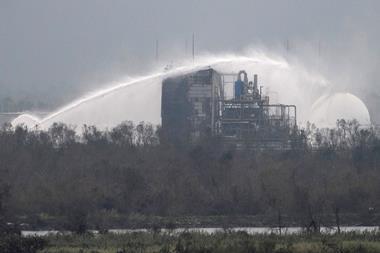Chemistry education in Australia is in decline. Bill Price discusses the problems and proposes some solutions

It is a great irony that at a time when chemistry and the use of chemical principles are to dominate human activities as never before that chemical education is sliding into obscurity. The last century has seen monumental developments in chemical techniques that allow us to visualize chemical phenomena with atomic level detail. Such clarity has provided the basis for breakthroughs in disciplines such as medicine where a molecular level understanding of a disease has the promise of leading to a total cure.
Chemistry education’s predicament is perplexing. It is not clear how we have arrived at this situation. Also, we can’t define a well-delineated set of problems that, if corrected, would re-install chemistry to its pre-eminent position among the sciences.
The demise of chemistry education seems to be a global problem but the symptoms have regional variations. In the UK, chemistry departments are closing. In Australia, there has been a rapid decline in the size of chemistry departments, with the number of staff (academic and technical) per department dropping precipitously. The difference between the two likely involves geographical factors: in Australia if a chemistry department at one university closes the next university might be simply too far away.
Australia has 34 universities that teach chemistry to some extent. Sixteen of these have departments or schools with ’chemistry’ or ’chemical’ in the title. Over the last decade, the number of university students in Australia has risen by more than 40 per cent but the percentage of chemistry students has dropped from 2.1 per cent to only 1.4 per cent. Does this mean that the importance of chemistry is decreasing? To this I would answer a resounding No! So what is occurring?
A number of conclusions can be drawn, including: chemistry is more often being taught as a service course to another discipline (perhaps with an increasing tendency to be transplanted to the other disciplines); fewer students are viewing chemistry as their final academic destination; and many chemistry departments have slipped below a size viable to comprehensively teach and research chemistry.
Many reasons have been mooted for chemistry education’s plight including, pre-tertiary education, uninspiring courses, being seen as being too hard, and lack of career opportunities. Undoubtedly all of these play some role but perhaps the root of the problem is the paradox that chemistry is so all-encompassing that it has developed an identity problem. This paradox is chemistry’s strength because it shows that chemistry is an enabling discipline that underpins the sciences, medicine and industry. But it is also a weakness because nebulous definitions lead to a hazy perception of career opportunities. A century ago a chemist was almost invariably someone in a lab coat who tinkered with refluxing chemicals, today this is the exception.
There is a difference between reinvigorating chemistry and re-establishing the dominance of chemistry departments. To reinvigorate chemistry, it needs to be overtly associated with the success of other disciplines, such as the development of a new anticancer drug as being a triumph for chemistry and not only of medicine, and from the earliest days of the schooling process.
Regarding chemistry departments, we need to consider why we need them. They are the most efficient way to maintain and develop chemistry as a body of knowledge and thus they should be protected. Perhaps chemistry schools would better serve themselves by giving their sub-disciplines new labels. A century ago it was much easier to set boundaries between physical chemistry, biological chemistry, inorganic chemistry and so on; but with current techniques and more interdisciplinary research themes focusing on molecular level behaviour, such as nanotechnology, these distinctions have become artificial. Perhaps obsolete departmental nomenclature exacerbates chemistry’s problems.
That chemistry education has a future is undeniable. Whether we can maintain chemistry as a cohesive discipline is more in doubt. But chemistry education’s future can only be guaranteed if we can more clearly define chemistry.
Bill Price is professor at the college of science, technology and environment, University of Western Sydney, Australia
Australian chemistry
| Year | 1990 | 2000 | 2003 |
| Staff per chemistry department | 41 | 22 | N/A |
| Chemical sciences students | 7373 | 7177 | 6855 |
| Total science students | 39 204 (18.8%) | 50 203 (14.3%) | 48 240 (14.3%) |
| Total students | 353 176 (2.1%) | 466 536 (1.5%) | 501 381 (1.4%) |












No comments yet